A tea ceremony and plum blossom viewing experience by Lake Biwa
One of the less visited corners of Japan's Kansai Region, the largely rural prefecture of Shiga adjoins the greater Kyoto area and encircles Lake Biwa - the largest and most ancient freshwater lake in the country. Despite its relatively low visitor numbers however, it's an area with a huge amount to offer, from Hikone Castle - one of just 12 in Japan with an original and intact main keep - to its wild natural vistas and historic small towns.
Having visited the prefecture only a few times before, I was delighted to have the chance to deepen my understanding on a recent overnight trip to Nagahama - an historic castle town on the shore of Lake Biwa with a quiet and unspoilt feel, despite its easy access from central Kyoto in just a little over an hour. Apart from getting to know Nagahama itself, the main purpose of my visit was to take part in a very special Tea Ceremony experience, led by a well known instructor and tea entrepeneur in the grounds of an historic local mansion.
Day 1: Nagahama
Arriving into Nagahama Station on a cool, cloudy, early autumn day, I immediately set off for the nearby port where I would begin my day of sightseeing with a cruise to the tiny island of Chikubushima, a journey of just under 12 kilometers to the northern part of the lake. Some 6 kilometers from the nearest shore and just 2 kilometers in circumference, it's easy to understand the aura of mystery and even foreboding Chikubushima has commanded over the centuries - a place of special reverence earning it the nickname gisle of godsh, and in at least once famous case, of exile.


Stepping off of the ferry and onto the little port, my first task was to climb a flight of 165 stone steps to the temple complex of Hogonji. Founded long ago in the 8th century, the temple was once home to a thriving monastic community, however fires, earthquakes and regional conflicts have whittled it down over the centuries to a shadow of its former size and grandeur. Despite this decline, the temple's remote setting still lends it a powerful atmosphere, while a number of fascinating historical features can be found among its remaining buildings.
Arriving at the upper part of the temple complex, my first stop was at the Hondo, or main hall. Although relatively new itself, having been heavily renovated in the 1940s, the building contains what is considered one of Japan's three great carved images of the goddess Benzaiten, alongside others found at the Itsukushima Shrine in Hiroshima and Enoshima in Kamakura.

About halfway back down the hillside is the Kannondo Hall, which was moved to its present location in 1602 from the Toyokuni Shrine in Kyoto, and is today the 30th of 33 stops on the West Japan Pilgrimage Route. In particular, the building is known for two striking architectural features, both with a connection to the great 16th century warlord Toyotomi Hideyoshi, who held Nagahama Castle and one of the key figures in the unification of Japan.
The first of these is its grand entrance, known as the Karamon Gate. Finely carved and vibrantly painted in the style of its time, it is said to have once belonged to Osaka Castle - one of Hideyoshi's prized construction projects which was later attacked and destroyed in 1615.


Connecting the temple to the neighboring Tsukubusuma Shrine is the second highlight - a wooden passageway, raised up on wooden supports and embedded into a cliff face. Known as the Funaroka or ship corridor, it is believed to have been constructed entirely with timber from the Nippon Maru, a 30 meter warship built as the flagship for Hideyoshi's ill-fated expedition to Korea.


The shrine's main building - donated personally by Hideyoshi from his castle at Fushimi Momoyama - features some splendid decorations, although the inner sanctuary area is off-limits to visitors.
Directly opposite is the Ryujin Haijo, or dragon god worship hall, where tradition holds that by inscribing a wish on a little clay bowl and throwing it under a torii gate facing out towards the lake, you can make it come true. I gave it a try, but my aim was poor on that day.
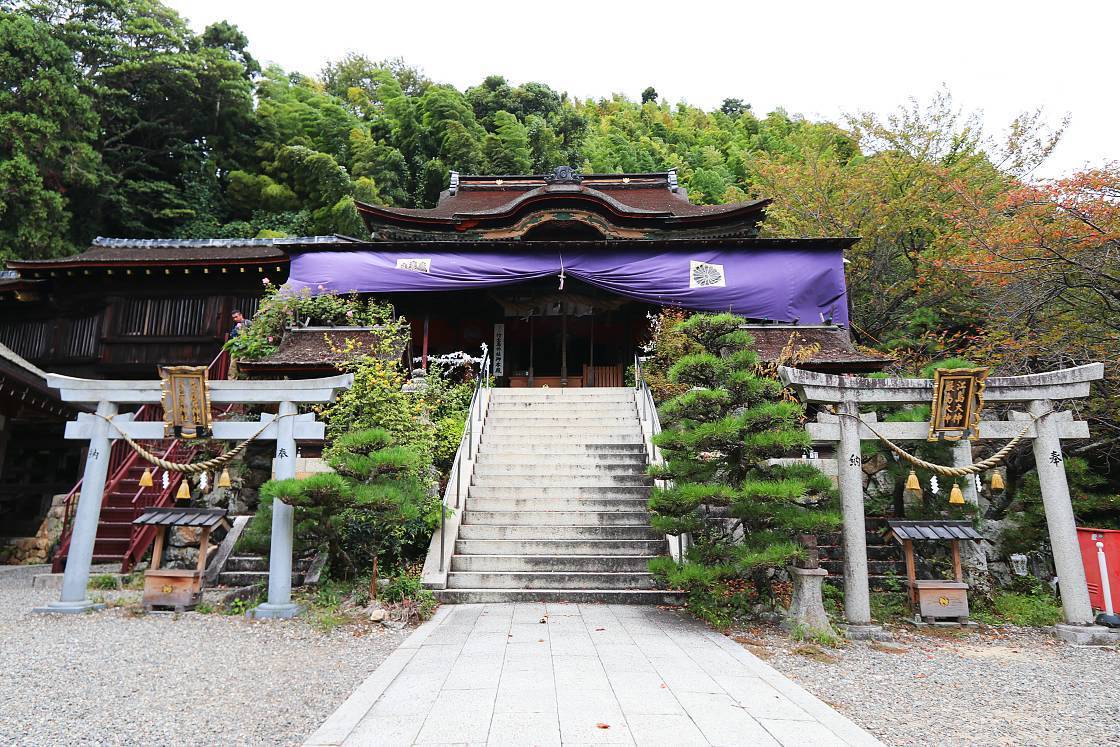

With that, it was time to make my way back to the port in time for the next ferry departure, and the island was soon receding into the distance as we retraced our journey to Nagahama Port.


It was approaching lunchtime as I arrived back into Nagahama Port, so I took a 10 minute stroll towards the center of town to Nagahama Roman Beer, a brewery and restaurant set in an attractively renovated storehouse. At least 100 years old, the building has retained a pleasantly rustic feel, with its clay walls and wooden beams contrasting nicely with the high tech brewing equipment on display.


Leafing through the menu - big on western-inflected izakaya classics like meats, pastas, pizzas and salads, with four home brews on tap - I decided on the roast Omi beef and a glass of Nagahama Ale, both delicious and hugely satisfying. Named for the former province that we now call Shiga Prefecture, the locally bred Omi beef was a particular treat - perfectly cooked, tender and packed with meaty flavor.
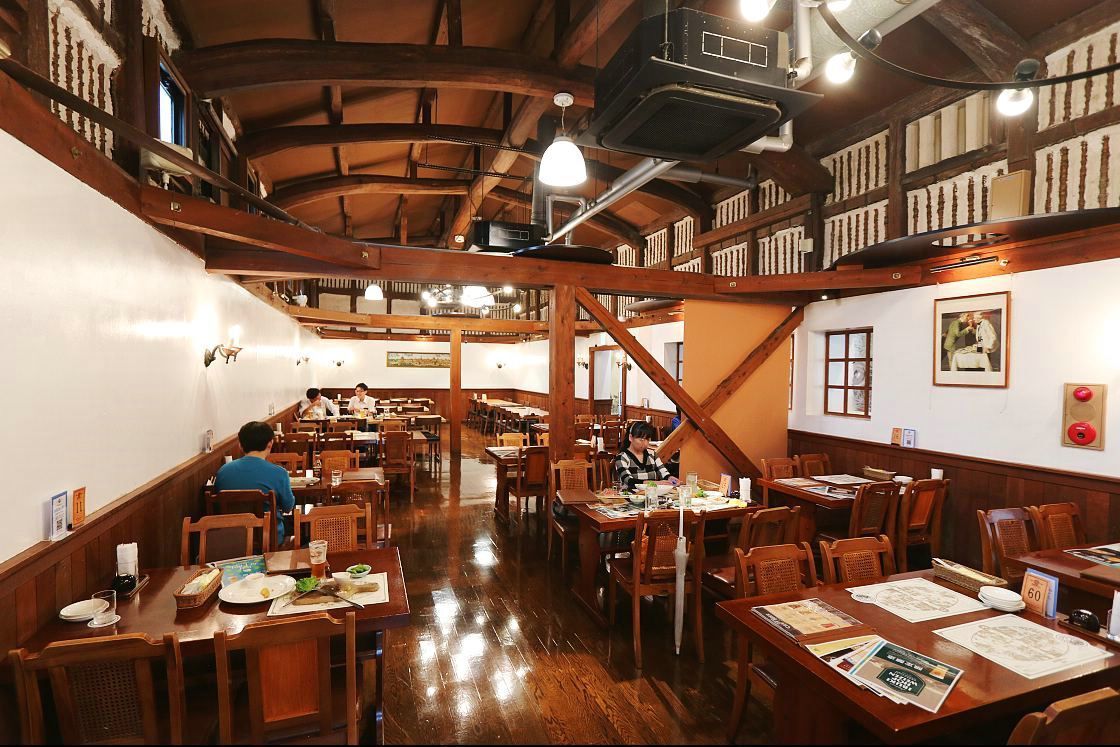

My next stop in the town was just a few steps away at the Keiunkan - a stately house built during the Meiji Period (1868-1912) to receive the emperor on his way to a state visit in Kyoto, and now open to the public. Inside, visitors can take in a series of beautifully appointed tatami rooms, which serve every year in spring as the venue for an exhibition of bonsai plum blossom trees.
Typically smaller and more delicate than the more famous cherry blossoms, plum blossoms also come in a wider range of colors - from soft pink to deep, vibrant reds - making for even more striking, extravagant displays. They also bloom a little earlier in the year - perfect for travelers outside of the main sakura season, or who prefer to avoid the overcrowding that it can bring.




Standing slightly apart from the main residence in the elegant, Meiji-era landscape garden is a traditional teahouse that was the focus of my visit. Here, I had arranged to take part in a special experience hosted by Tyas Sosen, a Belgian-born tea entrepreneur, author and an instructor in the art of Enshu-ryu tea ceremony.


Expressed simply, the tea ceremony can be described as the practice of brewing and sharing tea, yet contained within it are very deep elements of Japanese culture and aesthetic sensibility. Of course, our focus for the day was to cover a few of the basics, yet in the hands of a gifted teacher like Tyas, even this was enough to communicate a sense of great depth, leaving me feeling inspired to learn more.
My experience on the day was a pilot of sorts for a special tour running from January 21-31 in 2025 and available to book online through Wabunka. Timed to coincide with the plum blossom season, the program will include a 40-minute tour of the plum blossom bonsai exhibition led by the same local artisan in charge of maintaining the trees on display, in addition to the tea ceremony experience which lasts for an hour.


Saying my goodbyes, I left the Keiunkan behind and continued on to my next stop of the day, which happened to be located directly opposite. Set in the former Nagahama Station building, which dates to 1882 and is the oldest building of its kind in Japan, Nagahama Railway Square combines two separate museums - the Nagahama Railway Culture Museum, featuring a wide collection of scale models and information relating to trains in general - and the Hokuriku Line Electrification Memorial Museum, exhibiting two classic locomotives. The station itself played an important role in Japan's industrial history, as part of the first cross-country connection between the Pacific Ocean and the Sea of Japan.

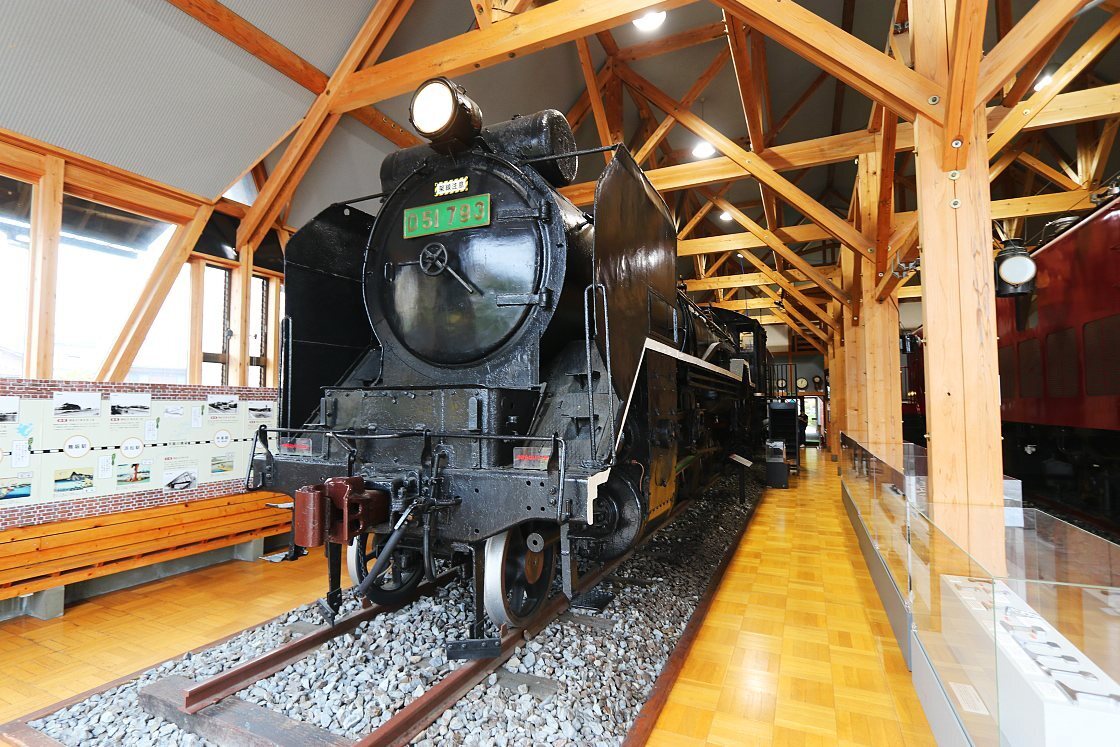
From here, I took a 10 minute stroll deeper into the historic part of town to Kurokabe Square. Centered on an intersection of the Hokkoku Kaido - an ancient highway connecting Japan's Hokuriku and Kansai regions - the area features a number of stores, workshops and galleries, many in restored townhouses preserving the ambience of an old post town. The neighborhood takes its name from an elegant western-style building dating to 1900, also called Kurokabe Square and today one of several shops selling artisanal glass.


A short walk to the east along the Otemon Shopping Street, I paid a visit to two local museums - one celebrating a centuries long local tradition, and the other a little more quirky.
Every year from April 9-17, the town hosts a centuries-old festival known as the Hikiyama Matsuri, in which large floats known as hikiyama are pulled around by volunteers, and in a unique twist seen nowhere else in Japan, are employed as stages for kabuki performances by local children, complete with elaborate costumes and make-up.
The story of the festival can be traced to the time of Toyotomi Hideyoshi. As the local ruler, he is said to have celebrated the birth of his son by distributing gold dust among the townsfolk. To show their gratitude and celebrate the occasion, the town used the money to craft 12 beautifully decorated floats and have continued the tradition ever since, with many of the current floats dating to the middle of the Edo Period.
At the Nagahama Hikiyama Museum, visitors can see two of the four floats due to appear in the next festival, alongside exhibits showcasing the festivities and highlighting various aspects of local life.


Next on my list was the Kaiyodo Figure Museum, dedicated to the work of a company famous for its plastic figurines and assembly hobby kits. Inside, visitors can find a quite dazzling array of models large and small, many recognizable from popular films and anime.
Even as someone who's never put together a plastic model in my life, I found it surprisingly absorbing, and enjoyed seeking out recognizable details among certain characters or larger diorama.

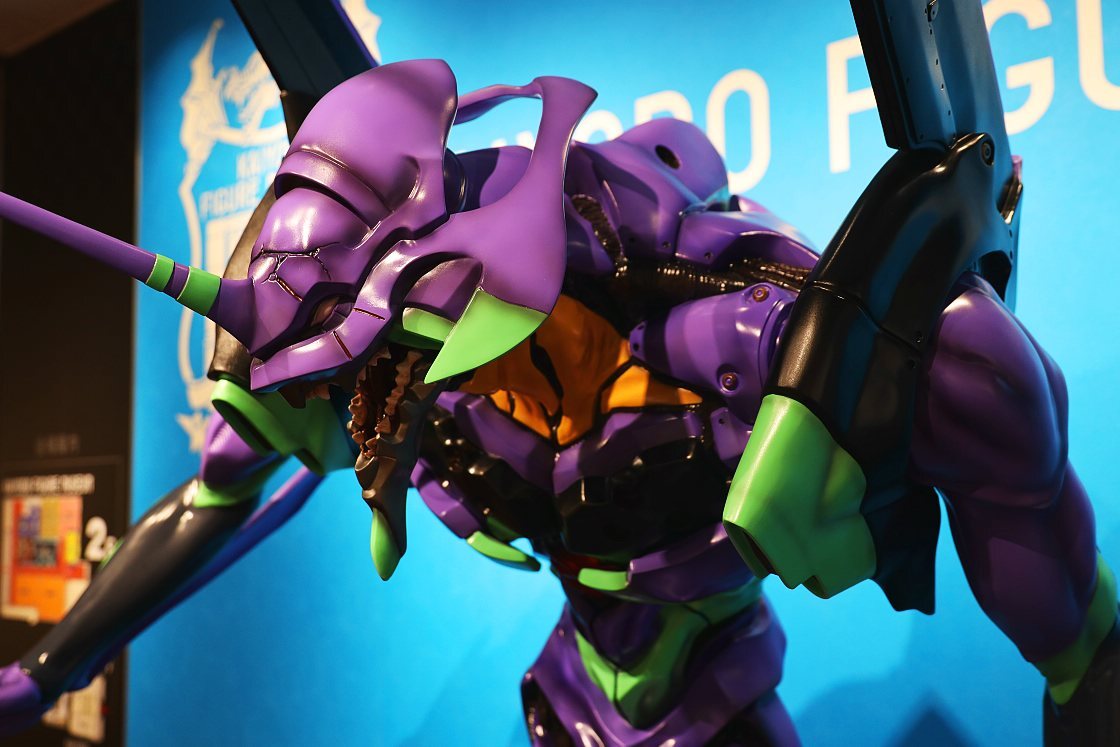
With afternoon quickly giving way to evening, it was time to make my way to my accommodation for the night. Located in the heart of Nagahama's historic district just a few steps from Daitsuji Temple, the Hitoiki is a boutique hotel with just five rooms, comprising a row of former merchant houses renovated in an elegant, early 20th century style.
I was instantly impressed by Hitoiki's concept and approach. While many visitors will naturally gravitate towards the traditional style and hands-on hospitality of a ryokan, there's something wonderfully atmospheric about staying overnight in a beautiful, old building in a highly atmospheric part of town.

After settling into my room for the night - a split level space complete with a small kitchen and generously-sized tatami bedroom, it was time to head out again for a special pairing of sake and funazushi at the nearby restaurant Konareru, one of several experiences available to book through the Hitoiki's website.

A specialty of the Shiga region since ancient times and a progenitor of modern sushi, funazushi is made with nigorobuna - a freshwater fish and member of the carp family - caught locally in Lake Biwako, then salted, stuffed with rice and left to ferment over a period of months.

For my tasting experience, I was presented with three bite-sized pieces of the delicacy - one fresh, one lightly seared and the last containing eggs for an added boost of flavor - paired with three versions of the locally brewed Shichihonyari sake. The name, meaning gseven spearsh is a reference to seven vassals of Toyotomi Hideyoshi, whose bravery at the Battle of Shizugatake (1583) has passed into legend.
Not unlike natto, funazushi is one of those Japanese dishes with great cultural significance, but that can require a bit of daring on the part of western visitors to try. For my part, I genuinely had no idea what to expect, but after a good sip of the Shichihonyari - delicious, full bodied and flavorsome - I took my first bite and was rewarded with an explosion of complex flavors: fishiness, of course, but also waves of sultana-like spice and sweetness that for a few crazed moments made me think of christmas cake. Suffusing everything was a gentle, vinegary warmth that gradually expanded on the palette into a long and satisfying finish.

Delighted with my new discovery, I said my thanks and made my way back to my accommodation, where a final treat remained to round off the day - a private sauna built into a former traditional storehouse at the rear of the property.


Day 2: Shizugatake and Kinomoto
Setting off early the following morning, I began my second day with a brief stroll around the historic district, beginning with the nearby temple of Daitsuji. Founded in the early 17th century as a branch temple of Higashi Honganji in Kyoto, the complex features an impressive main gate that looms over the surrounding streets, while its main building once formed part of the lord's residence at Fushimi Castle.
From here, I slowly wound my way towards Nagahama Station, passing on the way a whole series of beautifully renovated old buildings, many now the venue for smart-looking cafes, restaurants and other local businesses.
My main focus for the day was the nearby town of Kinomoto, a 15 minute train ride along the shore of Lake Biwako, close to its northern tip. From Kinomoto Station, I jumped in a taxi for a quick ten minute drive to the base of Mount Shizugatake, a 421 meter peak with some stunning views over the lake and its surroundings.


In June of 1583, the mountain was the site of an important battle between Hideyoshi and a neighboring warlord, Shibata Katsuie, whose power base lay in what is today Fukui Prefecture. Following the surprise assassination of Oda Nobunaga - the preeminent overlord in whose service Hideyoshi had already risen to great heights - the delicate balance of power among regional lords had shifted, leading to a dangerous dispute over the coming succession.
With Hideyoshi away in Gifu, Katsuie launched a coordinated surprise attack on several fortifications in and around the mountain. Despite capturing one fort on nearby Mount Iwasaki and killing its commander however, the attack failed to capture Shizugatake itself and quickly stalled. Hideyoshi himself, meanwhile, was already leading a relief effort at lightning speed.

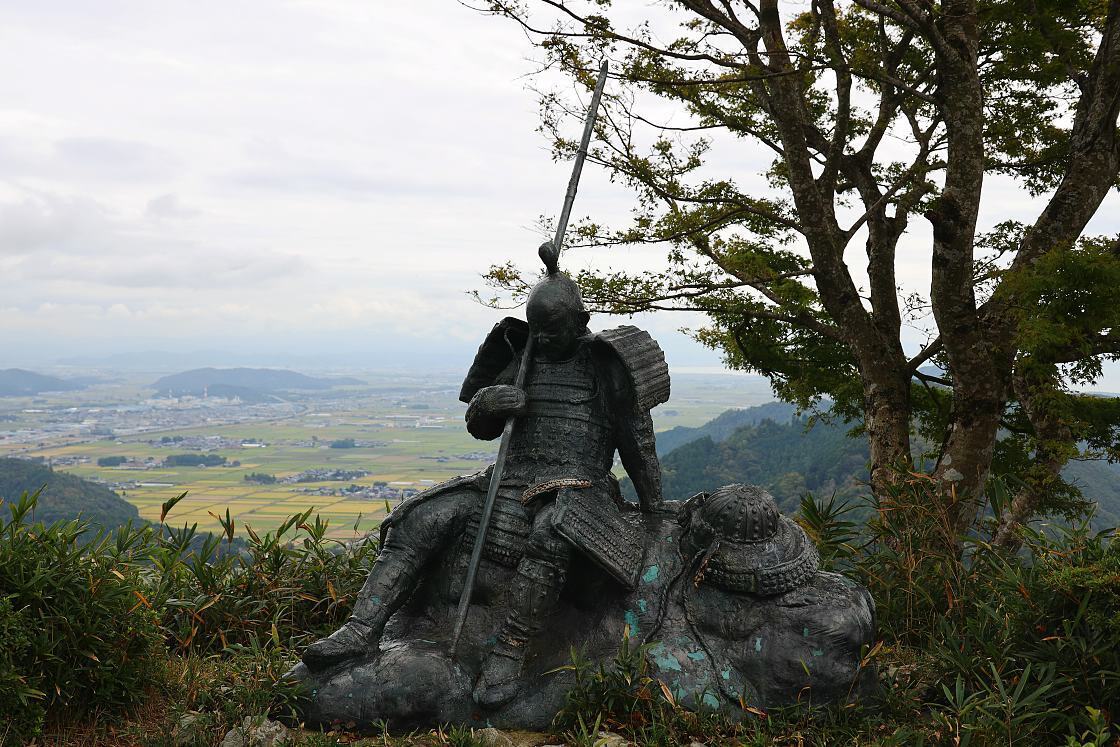
Despite sightings of Hideyoshi's army on the march, Katsuie's commander on the ground refused orders to withdraw and a vicious battle ensued. With the enemy put to flight, Hideyoshi quickly followed up on his success with an attack deep into Fukui - laying siege to Katsuie's own castle at Kitanosho in what is today Fukui City, and putting almost the entire clan to the sword.
Today, the summit can be reached either by a winding hiking route, or as I chose, by chairlift. At the top, visitors can find a number of nice viewpoints, looking out over Nagahama and its surroundings, Lake Biwako and its smaller counterpart, Lake Yogo, on the opposite side.


After a few peaceful moments enjoying the panorama, it was time to take the chairlift back down the mountain and retrace my steps to Kinomoto for a slow-paced stroll around the town.
Located at the intersection of two old highways, Kinomoto developed as a post town, facilitating trade and catering to travelers on the road. The town was also something of a tourist attraction thanks to Jizoin - a temple dating to the 8th century and known for a six meter statue of the guardian figure Jizo, said to have the power to cure blindness.
Today, it's a modest but attractive temple, and while the original Jizo statue is kept out of the public eye, the candlelit interior of its main building is especially atmospheric.

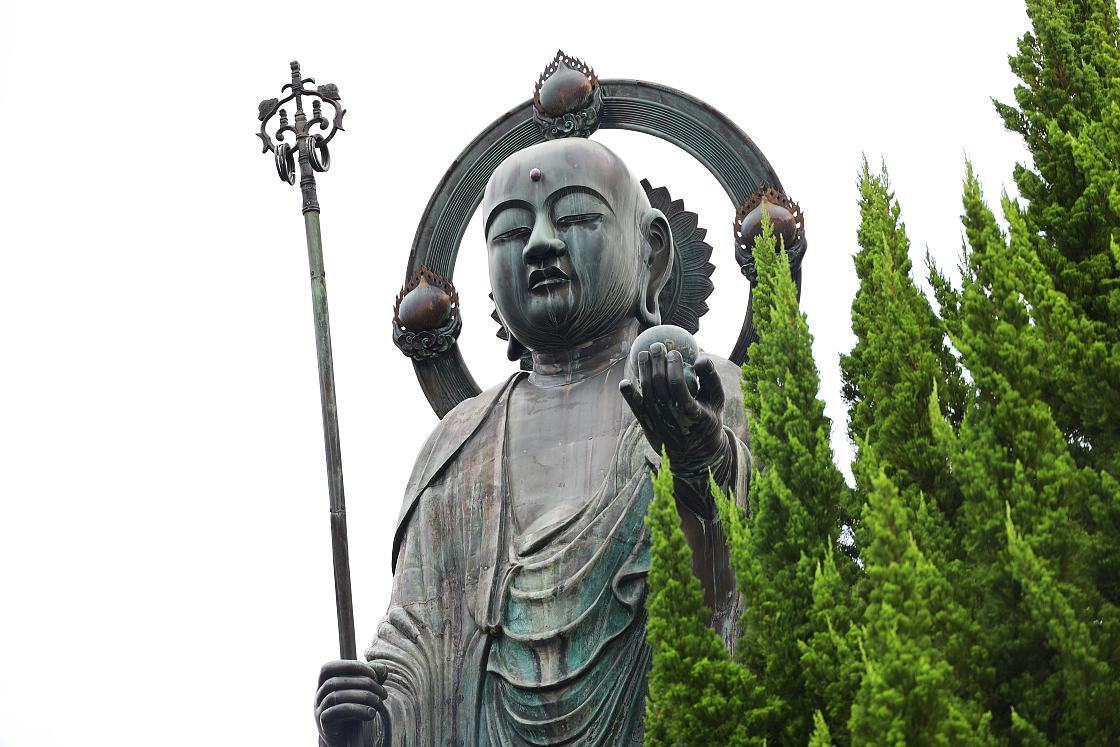
Taking a left turn out of the temple and continuing down the main street, I next made a stop at Tomita Shuzo, a sake brewery with a history of around 480 years and the producer behind the delicious Shichihonyari brand I had sampled with my funazushi the evening before. Now under its 15th generation of ownership, the brewery continues to keep tradition at its heart, using only rice from local farmers and purified spring water from nearby Mount Ibuki.


By now quite famished, I stopped by for lunch at Sushikei Gensan, a charming sushi restaurant located just across from the sake brewery. Here, the two specialities are shimesaba or cured mackerel - always a particular favorite of mine for its meaty texture and slight vinegary tang - and beef sukiyaki.

As well as the delicious sushi itself, the restaurant is an especially pleasant spot to relax and eat in, with an elegant little garden, and an old storehouse - one that has previously served variously as a government office, tax office, bank and community library - packed with antique artworks.

A little further down the same road I made a final visit to Daiko Shoyu, an artisanal soy sauce producer with a venerable history of its own, dating back to 1852, and operates out of a nicely maintained complex of machiya-style buildings. Much like Tomita Shuzo, Daiko benefits from the exceptionally pure water that springs from the slopes of Mount Ibuki, and continues to go from strength to strength, with many items from its product line selling successfully abroad.


It was almost time to say goodbye to Nagahama, a town I had immensely enjoyed - but first there was one final spot that I couldn't miss. Located close to the water's edge and just a short stroll from the station, I dropped by the modern reconstruction of Nagahama Castle, which also serves as a local history museum.
Completed around 1577 by Hideyoshi himself - the first of several he would construct in the course of his career - the original structure would have been somewhat different in appearance and even included stone walls leading directly into the lake, allowing boats to enter the defensive circle.

Amongst the exhibits inside, I found a number of interesting items from documents and hanging paintings to beautifully preserved weapons and armor. The main attraction though, was a last look out over Lake Biwako and the town from the top floor observation deck.



Access Information
From Kyoto Station, take a Biwako Line New Rapid Service bound for Shiotsu (about 90 minutes, 1,340 yen, hourly departures) and get off at Nagahama Station.

